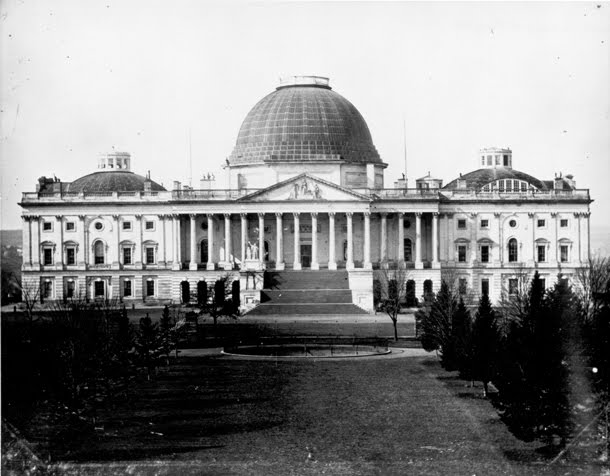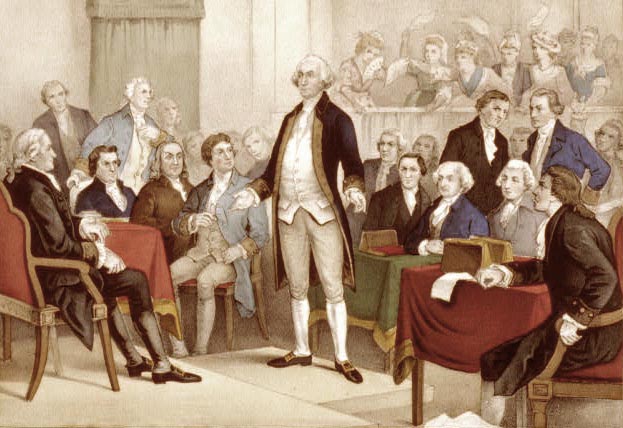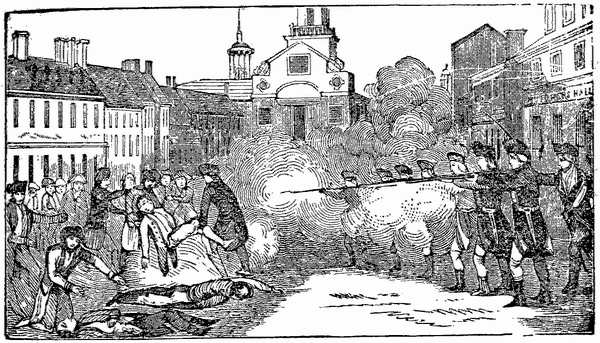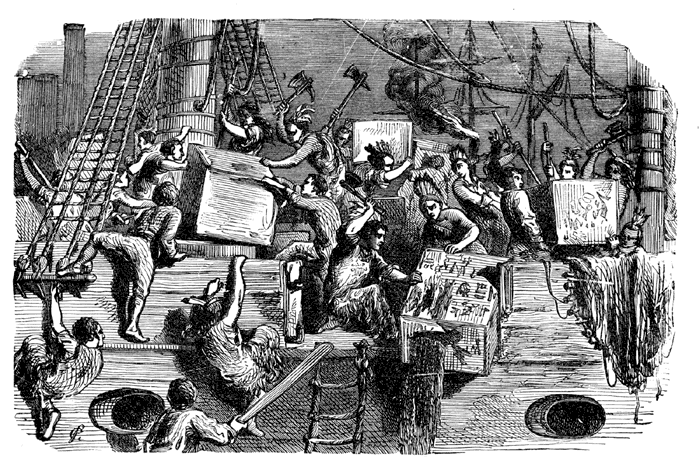From The CATO Institute:
Cutting Spending to Revive Federalism
by Chris Edwards
Chris Edwards is editor of the Cato Institute's Downsizing Government.org.
Added to cato.org on February 10, 2011
This article appeared on National Review (Online) on February 10, 2011.
PRINT PAGE CITE THIS Sans Serif Serif Share with your friends:
ShareThisHouse Republicans have promised major spending reforms, but GOP leaders are tongue-tied when they are asked which specific programs they want to cut. The GOP wants to cut domestic spending to 2008 levels, but that's just an accounting goal.
The GOP needs a larger vision to guide their reforms. Republicans need to communicate to the public how a smaller government would benefit America and what federal agencies and activities are damaging and counterproductive.
A key part of this strategy should be to revive a central theme of the 1981 and 1995 budget-cutting drives — getting the federal government out of what are properly state and local activities. Constitutional federalism has taken a beating as federal aid to the states has doubled over the last decade to $646 billion this year. This aid goes to public housing, community development, urban transit, and hundreds of other local activities.
The federal-aid system does not deliver high-quality and cost-efficient services to citizens.
The cost of federal aid has soared, and so has the number of different aid programs. By my count, the number of federal aid programs for the states totaled 1,122 in 2010. That is up 72 percent from 2000, and it is more than triple the number of aid programs there were in the mid-1980s, after terminations by President Reagan.
Reagan pushed hard to cut state aid. He argued in a 1987 executive order that "federalism is rooted in the knowledge that our political liberties are best assured by limiting the size and scope of the national government." Our liberties are imperiled by the explosive growth in federal aid because the aid is turning the states into little more than regional subdivisions of an all-powerful national government.
The huge federal deficit is one reason to cut state aid, but cutting aid makes sense for many reasons:
• Every dollar of federal aid sent to the states is taken from federal taxpayers who live in the 50 states. Sending all that money to Washington and back again creates a huge administrative burden in tracking the funding flows and dealing with all the regulations attached to each of 1,122 programs.
• Federal aid reduces state policy innovation because it comes with top-down rules that mandate conformity. State governments can't be "laboratories of democracy" if they operate under one-size-fits-all rules from Congress.
• Aid programs spur overspending by every level of government, since politicians can appease special interests with the spending while imposing part of the funding costs on other levels of government. State politicians over-expand Medicaid, for example, because the feds kick in more than $1 for every $2 in new benefits.
• Liberals imagine that federal experts can rationally distribute aid to the neediest local activities. The reality is that politics determines the activities and congressional districts that receive the most aid. Even if politics were taken out of it, the federal government does not have the knowledge to efficiently allocate local funding across a diverse nation of 308 million people.
• The huge scope of the aid system means that federal politicians spend much of their time on local issues. Rather than focusing on national defense, they are busy fixing potholes in their districts. Pres. Calvin Coolidge was prescient in warning that state aid was "encumbering the national government beyond its wisdom to comprehend, or its ability to administer" its proper roles.
• The three levels of government would work better if they resembled a tidy layer cake with separate functions, rather than a marble cake with jumbled lines of responsibility. The failure of our marble-cake government was evident in the disastrous lead-up to, and aftermath of, Hurricane Katrina.
Chris Edwards is editor of the Cato Institute's Downsizing Government.org.
More by Chris EdwardsPoliticians often claim that certain local activities are "national" priorities. The George W. Bush administration, for example, claimed a "compelling national interest" in providing federal aid for the K–12 schools. Yet in Canada, the federal government is generally not involved in the schools, and their kids do much better than U.S. kids on international tests. Thus, the desire of federal politicians to solve local problems must be tempered with an understanding that federal involvement is usually counterproductive.
The federal-aid system does not deliver high-quality and cost-efficient services to citizens. It delivers bureaucracy, overspending, and regulatory micromanagement from Washington. In addition to helping balance the budget, Republicans can start a national debate about the proper role of the federal government by pushing to terminate the vast array of costly state aid programs
Cutting Spending to Revive Federalism
by Chris Edwards
Chris Edwards is editor of the Cato Institute's Downsizing Government.org.
Added to cato.org on February 10, 2011
This article appeared on National Review (Online) on February 10, 2011.
PRINT PAGE CITE THIS Sans Serif Serif Share with your friends:
ShareThisHouse Republicans have promised major spending reforms, but GOP leaders are tongue-tied when they are asked which specific programs they want to cut. The GOP wants to cut domestic spending to 2008 levels, but that's just an accounting goal.
The GOP needs a larger vision to guide their reforms. Republicans need to communicate to the public how a smaller government would benefit America and what federal agencies and activities are damaging and counterproductive.
A key part of this strategy should be to revive a central theme of the 1981 and 1995 budget-cutting drives — getting the federal government out of what are properly state and local activities. Constitutional federalism has taken a beating as federal aid to the states has doubled over the last decade to $646 billion this year. This aid goes to public housing, community development, urban transit, and hundreds of other local activities.
The federal-aid system does not deliver high-quality and cost-efficient services to citizens.
The cost of federal aid has soared, and so has the number of different aid programs. By my count, the number of federal aid programs for the states totaled 1,122 in 2010. That is up 72 percent from 2000, and it is more than triple the number of aid programs there were in the mid-1980s, after terminations by President Reagan.
Reagan pushed hard to cut state aid. He argued in a 1987 executive order that "federalism is rooted in the knowledge that our political liberties are best assured by limiting the size and scope of the national government." Our liberties are imperiled by the explosive growth in federal aid because the aid is turning the states into little more than regional subdivisions of an all-powerful national government.
The huge federal deficit is one reason to cut state aid, but cutting aid makes sense for many reasons:
• Every dollar of federal aid sent to the states is taken from federal taxpayers who live in the 50 states. Sending all that money to Washington and back again creates a huge administrative burden in tracking the funding flows and dealing with all the regulations attached to each of 1,122 programs.
• Federal aid reduces state policy innovation because it comes with top-down rules that mandate conformity. State governments can't be "laboratories of democracy" if they operate under one-size-fits-all rules from Congress.
• Aid programs spur overspending by every level of government, since politicians can appease special interests with the spending while imposing part of the funding costs on other levels of government. State politicians over-expand Medicaid, for example, because the feds kick in more than $1 for every $2 in new benefits.
• Liberals imagine that federal experts can rationally distribute aid to the neediest local activities. The reality is that politics determines the activities and congressional districts that receive the most aid. Even if politics were taken out of it, the federal government does not have the knowledge to efficiently allocate local funding across a diverse nation of 308 million people.
• The huge scope of the aid system means that federal politicians spend much of their time on local issues. Rather than focusing on national defense, they are busy fixing potholes in their districts. Pres. Calvin Coolidge was prescient in warning that state aid was "encumbering the national government beyond its wisdom to comprehend, or its ability to administer" its proper roles.
• The three levels of government would work better if they resembled a tidy layer cake with separate functions, rather than a marble cake with jumbled lines of responsibility. The failure of our marble-cake government was evident in the disastrous lead-up to, and aftermath of, Hurricane Katrina.
Chris Edwards is editor of the Cato Institute's Downsizing Government.org.
More by Chris EdwardsPoliticians often claim that certain local activities are "national" priorities. The George W. Bush administration, for example, claimed a "compelling national interest" in providing federal aid for the K–12 schools. Yet in Canada, the federal government is generally not involved in the schools, and their kids do much better than U.S. kids on international tests. Thus, the desire of federal politicians to solve local problems must be tempered with an understanding that federal involvement is usually counterproductive.
The federal-aid system does not deliver high-quality and cost-efficient services to citizens. It delivers bureaucracy, overspending, and regulatory micromanagement from Washington. In addition to helping balance the budget, Republicans can start a national debate about the proper role of the federal government by pushing to terminate the vast array of costly state aid programs
.gif)






























No comments:
Post a Comment